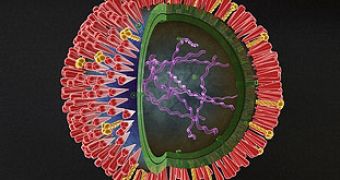Leading virologists are now looking into the possibility of engineering several mutant forms of a deadly bird flu virus.
The virus, dubbed H7N9, was discovered in China only a few months ago. Since then, it has sickened 133 people, 43 of whom are now dead.
As previously reported, the virus appears to have the ability of passing from one human to another.
Therefore, researchers fear that, unless they carry out experiments on this newly discovered virus and learn more about it, a potential pandemic would catch us entirely off guard.
Sources say that, as part of these experiments, scientists are to create several highly transmissible and deadly forms of H7N9.
The work is to be carried out in secure facilities scattered around the world. These measures are intended to minimize the risk that the viruses might escape and affect ordinary folks.
Specialists are confident that the mutant forms that they plan to engineer will help them determine how likely it is that the virus will one day constitute a major threat to humans.
What's more, they hope to learn how many genetic changes the virus would have to undergo before it turns into something high officials and authorities should start worrying about.
“'It's clear this H7N9 virus has some hallmarks of pandemic viruses, and it's also clear it is still missing at least one or two of the hallmarks we've seen in the pandemic viruses of the last century.
“So the most logical step forward is to put in those (missing) mutations first,” researcher Ron Fouchier from the Erasmus Medical Center reportedly told the press.
Transmissibility and virulence, effects on the immune system, resistance to antiviral drugs and the ability to hybridize with other flu strains are just some of the issues the specialists will focus on during this investigation.
As it always happens when scientists start playing with viruses and the like, many argue that creating mutant H7N9 forms is not a very good idea, and that the researchers should not move forward with their plans.

 14 DAY TRIAL //
14 DAY TRIAL //